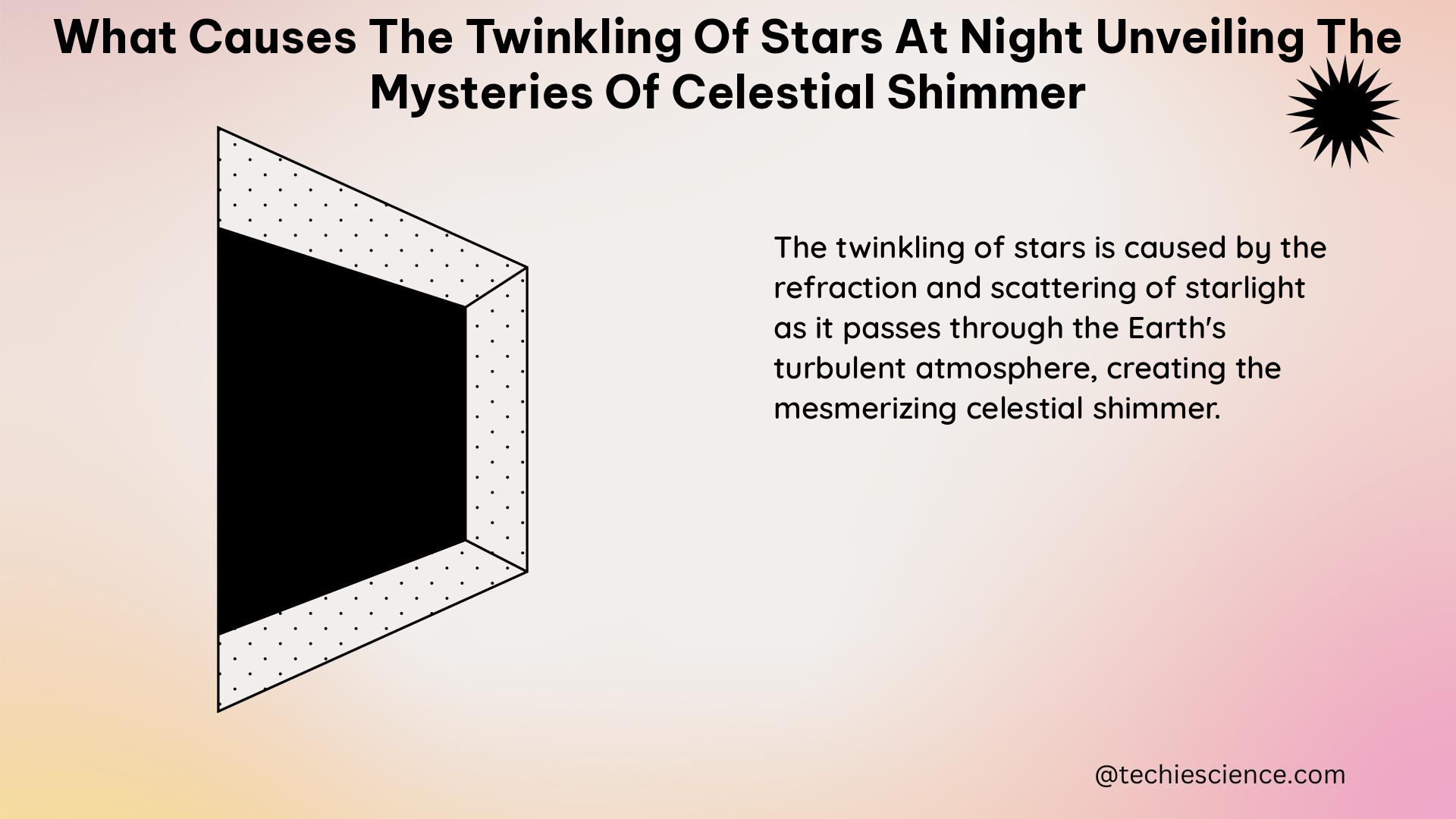The twinkling of stars, a captivating phenomenon that has captivated stargazers for centuries, is a result of the complex interplay between the light from celestial bodies and the turbulent atmosphere of our planet. This mesmerizing display of celestial shimmer unveils the intricate workings of the universe, offering a glimpse into the intricate dance of light and matter.
The Refraction of Starlight
The primary cause of star twinkling is the refraction of starlight as it passes through Earth’s atmosphere. The atmosphere is a dynamic layer of gases and particles, constantly in motion due to changes in temperature, pressure, and wind. These atmospheric disturbances act as a lens, bending and distorting the light from distant stars, resulting in the apparent changes in brightness and position that we perceive as twinkling.
Factors Influencing Twinkling

The degree of twinkling exhibited by a star can be influenced by several factors, including its color, size, and position in the sky.
Color and Twinkling
The color of a star can have a significant impact on its twinkling. Hotter, blue or white stars, such as Sirius, emit a more intense and steady light, which can make the twinkling effect less pronounced. In contrast, cooler red stars, like Betelgeuse, emit less intense light, making their twinkling more pronounced.
Size and Twinkling
The size of a star also plays a role in its twinkling. Smaller stars, like our Sun, which appear as points of light when observed from Earth, are more susceptible to twinkling because even slight disturbances in the atmosphere have a greater impact on a concentrated source. Larger stars, on the other hand, may exhibit less apparent twinkling due to their perceived size, as their light is dispersed over a larger area within our field of vision.
Position and Twinkling
The position of a star in the sky can also influence the degree of twinkling. Stars closer to the horizon tend to exhibit more twinkling than those directly overhead, as their light must pass through a greater thickness of the Earth’s atmosphere, resulting in more refraction and distortion.
Quantifying Twinkling: The Scintillation Index
The twinkling of stars can be quantified using a parameter called the “scintillation index.” The scintillation index is a measure of the variance in the intensity of starlight, and it can be calculated using the following formula:
S = √(
Where:
– S is the scintillation index
– I is the intensity of starlight
– < > denotes the average value over time
For example, if a star has an average intensity of 1000 photons per second and a variance in its intensity of 100 photons per second, the scintillation index can be calculated as:
S = √(1000² + 100²) / 1000 = 10.05
The scintillation index can be used to compare the twinkling of different stars and to study how the twinkling varies with factors such as altitude and atmospheric conditions.
Measuring Twinkling: Photometry and Speckle Interferometry
Measurable data on the twinkling of stars can be obtained through various methods, such as photometry and speckle interferometry.
Photometry
Photometry is the measurement of the brightness of a celestial object over time. By analyzing the fluctuations in a star’s brightness, researchers can gain insights into the degree of twinkling and the factors that influence it.
Speckle Interferometry
Speckle interferometry is a technique used to obtain high-resolution images of stars by analyzing the patterns of light and dark speckles that are produced by atmospheric turbulence. This method allows researchers to study the fine details of a star’s twinkling and to better understand the underlying physical processes.
Twinkling and Atmospheric Conditions
The twinkling of stars is not only influenced by the color, size, and position of the star but also by the temperature, pressure, and wind speed in the atmosphere. Changes in these atmospheric conditions can affect the degree of refraction and distortion experienced by the starlight, leading to variations in the observed twinkling.
Conclusion
The twinkling of stars is a captivating phenomenon that reveals the intricate interplay between light and the Earth’s atmosphere. By understanding the factors that influence this celestial shimmer, we can gain valuable insights into the nature of our universe and the complex processes that shape the light we observe from distant stars. Through the use of advanced techniques like photometry and speckle interferometry, researchers continue to unravel the mysteries of star twinkling, expanding our knowledge of the cosmos and the wonders it holds.
Reference:
- “Twinkle, twinkle fading stars: Hiding in our brighter skies | CBS 42” (https://www.cbs42.com/hooked-on-science/ap-science/ap-twinkle-twinkle-fading-stars-hiding-in-our-brighter-skies/)
- “Scintillation in Twinkling Stars | Overview & Causes – Study.com” (https://study.com/learn/lesson/scintillation-twinkling-stars.html)
- “The Magic in Starlight: Understanding Why Do Stars Twinkle” (https://positiveprints.com/blog/understanding-why-do-stars-twinkle/)

The lambdageeks.com Core SME Team is a group of experienced subject matter experts from diverse scientific and technical fields including Physics, Chemistry, Technology,Electronics & Electrical Engineering, Automotive, Mechanical Engineering. Our team collaborates to create high-quality, well-researched articles on a wide range of science and technology topics for the lambdageeks.com website.
All Our Senior SME are having more than 7 Years of experience in the respective fields . They are either Working Industry Professionals or assocaited With different Universities. Refer Our Authors Page to get to know About our Core SMEs.